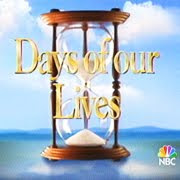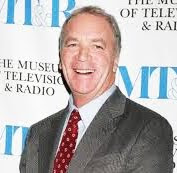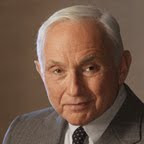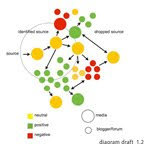
As the concept of "anything, anytime, any device" has taken hold, not all television programming has fared very well. Daytime soap operas were among the hardest hit.
The average ratings have fallen from a 6.2 million viewer average in 1990 to about 2 million in 2010. In fact, not a single new soap opera has been created since 1999 and the six that remained at the end of last year consistently live on the bubble. Even Disney, which owned the decade-old cable channel SOAPnet, will be discontinuing reruns in 2012.
However, in recent months, soap operas have been a surprise. The six remaining shows are up among women ages 18-49 despite most networks cutting back on the concept of the daily dramatic serial. If their numbers continue to grow, some executives might find themselves asking a question that they haven't asked lately.
What's the value of an audience?
According to some fans of the daily soap opera Days Of Our Lives, which ranks third in the ratings, they want the audience to be worth more than most producers and networks believe. The fans don't want to write the show, but they would like to help set a direction.
 Specifically, this group, called Ejami (a mashup of character names), primarily tunes in to see a single storyline revolving around the relationship of Elvis J. (“EJ”) Dimera (formerly Wells) and Samantha Gene (“Sami”) Brady. And, according to one fan, Ruthie, they are not keen on what seems to be ahead.
Specifically, this group, called Ejami (a mashup of character names), primarily tunes in to see a single storyline revolving around the relationship of Elvis J. (“EJ”) Dimera (formerly Wells) and Samantha Gene (“Sami”) Brady. And, according to one fan, Ruthie, they are not keen on what seems to be ahead. Following a plot mechanism relatively consistent with soaps, it seems the show introduced an improbable romantic story where the dashing male character EJ (James Scott) accepts the unlucky Sami (Alison Sweeney) for who she is. Then, as a matter of practicality, the two unlikely lovers get their wish. Ever since, the writers have been destructing the relationship and characters. The fans aren't having it anymore.
A snapshot of Ejami fans' vested interest in Days Of Our Lives.
My understanding is that for fans, the initial relationship was hot enough that an entire forum dedicated to the "Forbidden Love" was created the same year the romance was introduced in 2006. It has approximately 5,600 registered members who promote the show as much as they talk about the "Ejami" storyline. They average 25,000 to 42,000 conversations a month.
Many of the conversations are about the show, but there is also a considerable investment in fan fiction, artwork, video montages, and — as fan forums sometimes develop — personal accounts and milestones. They are a community and they want an enduring Ejami love story.
 To do it, they have been emailing and sending postcards to the studio, executives, writers, actors, and soap magazines. They also raise money and send holiday and birthday gifts to actors Sweeney and Scott. And they've even reached out to companies, thanking them for product placements. All together, there are approximately 35 separate and distinct campaigns.
To do it, they have been emailing and sending postcards to the studio, executives, writers, actors, and soap magazines. They also raise money and send holiday and birthday gifts to actors Sweeney and Scott. And they've even reached out to companies, thanking them for product placements. All together, there are approximately 35 separate and distinct campaigns. More recently, they have added Twitter campaigns and charity fundraisers ($15,000 raised for 26 nonprofit organizations). Suffice to say, they have developed a community not dissimilar to what most communicators hope to create online, every day.
For all their efforts, however, many of them were disheartened to learn that executive producer Ken Corday is steadfast that Ejami is not the path. Another person will be thrust into the mix to disrupt an already complicated affair of four characters. The primary two characters of concern have already suffered a laundry list of tragedies. Only Job, from the Bible, beats them.
Who really owns a soap opera?
In an age where even books, for better or worse, have become the subject of social interjection, there might be something here that is more than meets the eye.
Unlike some creative works that have author ownership, it sometimes feels as if the script writers, actors, actresses, executives, characters, and audiences tend to change after 46 years. Certainly, Days Of Our Lives is not the same show it was when it started. However, when you trace the original concept, Ken Corday, son of the late Ted and Betty Corday (co-creators of Days Of Our Lives) is clearly the owner. It's his story to guide, along with Gary Tomlin, who joined him as executive producer in 2008.
 This simple fact makes the preservation of a singular story line an interesting twist despite how fans might feel, different from show cancellation protests like Jericho or Veronica Mars. Personally, I tend to lean toward leaving creative calls to the authors/owners, with the exception of those stories that begin as a socially infused storyline. There is no obligation to fulfill the expectation of the audience for an outcome. In fact, it is the anticipation of not knowing that makes us appreciate any story all the more.
This simple fact makes the preservation of a singular story line an interesting twist despite how fans might feel, different from show cancellation protests like Jericho or Veronica Mars. Personally, I tend to lean toward leaving creative calls to the authors/owners, with the exception of those stories that begin as a socially infused storyline. There is no obligation to fulfill the expectation of the audience for an outcome. In fact, it is the anticipation of not knowing that makes us appreciate any story all the more. However, I also see that I'm in a shrinking minority and Corday might be too. When the creative expression no longer holds the interest of an audience, an artist has to ask themselves which is more valuable — ownership, fans, or the chance to hit 50 years. It's Corday's call to make as long as he has a contract with NBC.
Friendly campaigns are not enough to sway networks, let alone producers.
It almost seems a shame to say, but after watching the aforementioned television cancellation (Jericho, Veronica Mars) protests, niceness doesn't often make for a compelling campaign. Jericho fought a war. Veronica Mars fans kept it cool.
Jericho earned a truncated second season. Veronica Mars did not. Both sets of fans were teased with the promise of a potential movie. Both were disappointed.
Nowadays, a smaller group of Jericho fans still promotes comic books (a very messy affair) and reruns. But Veronica Mars fans are mostly on their own, with only Kristen Bell actively campaigning for a Veronica Mars movie. Based on results, even though it is not be what fans of EJami want to hear, bold campaigns sometimes disrupt friendly communities and generate attention.
Five elements for a "chance" to change a producer's mind.
1. Numbers. Ejami fans already have a central forum where they can coordinate ideas and activities online. Based on the various campaigns and media mentions, it seems proof positive that the group is practiced. What it lacks are numbers. Five thousand might seem like a lot, but something closer to one percent of the viewership would have a bigger impact.
2. Symbols. Fan-based campaigns need a clear message and easily identifiable symbols that can be recognized by people other than fans. For Jericho, it was peanuts and then the historic Don't Tread On Me flag. Veronica Mars never really took off with the Mars bars idea. It cannot be too myopic or generic; something in the middle like heart-shaped soap might do.
3. Headline Grabs. Getting attention in soap-releated blogs and publications is a great start, but fan-based campaigns have to build into movements that capture mainstream media attention. While they can be civil, they still have to meet the full measure of what makes news. The more bullet points you hit, the better your chances. Make it bold and original.
4. Cash. Earned media (as some public relations professionals call it, but I don't much like the term) aside, paid placement can be compelling. Jericho fans bought advertisements. Veronica Mars fans rented airplane ads. Both had social media campaigns as well. Whatever the campaign might be, the message has to be consistent and placed nationally as well as where Corday might see it. Make no mistake, it's his show.
 5. Ultimatum. At the end of the day, you have to ask "so what?" Jericho fans cancelled Showtime, boycotted CBS, flooded CBS phone lines and emails, made the public relations team stamp out many media fires, and countless other efforts. So, fans have to ask themselves if they are willing to boycott Days Of Our Lives, NBC, and the show's advertisers (assuming it will make an impact). If they are not, there isn't any incentive for a producer to listen (unless they are viewer-centric).
5. Ultimatum. At the end of the day, you have to ask "so what?" Jericho fans cancelled Showtime, boycotted CBS, flooded CBS phone lines and emails, made the public relations team stamp out many media fires, and countless other efforts. So, fans have to ask themselves if they are willing to boycott Days Of Our Lives, NBC, and the show's advertisers (assuming it will make an impact). If they are not, there isn't any incentive for a producer to listen (unless they are viewer-centric). There is something else. Always be careful what you wish for. It seems to me the appeal of Ejami is, at least a little bit, based on the notion of something that cannot be. If long-term romance was a sure thing, it might not have as much appeal. Fans of the show The Office know it. While the show is still fun, the forbidden romance of Jim and Pam was priceless.
Special thanks to Ruthie for her in-depth analysis of what the Ejami fan group has accomplished. Keep up the great work. The information you provided is an excellent backgrounder, better than what some pros I know provide.
































